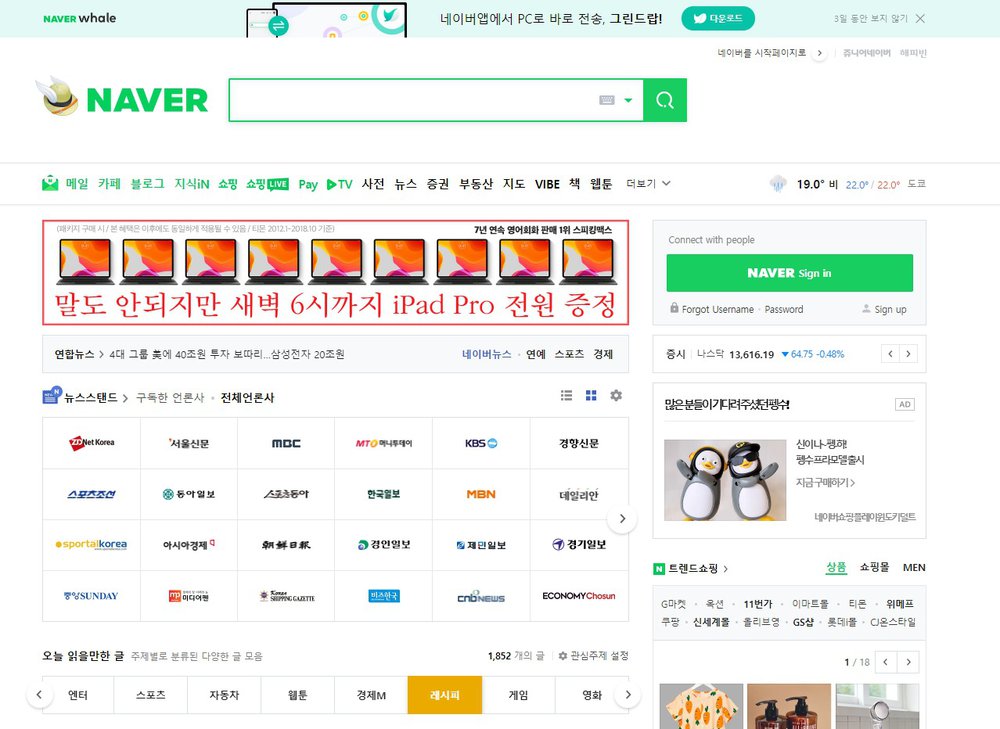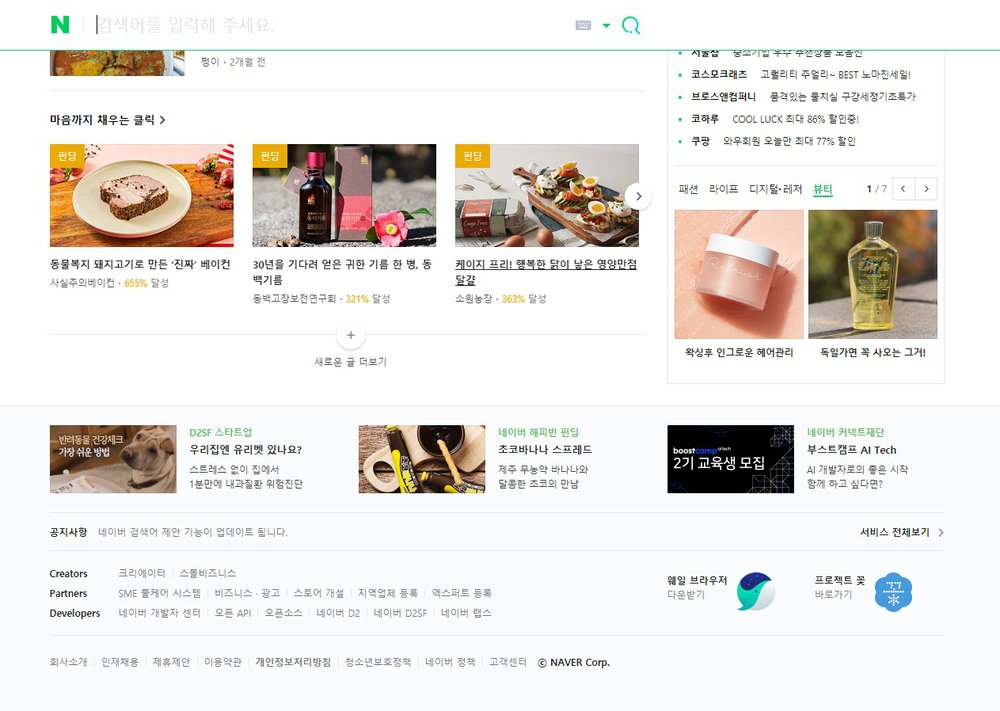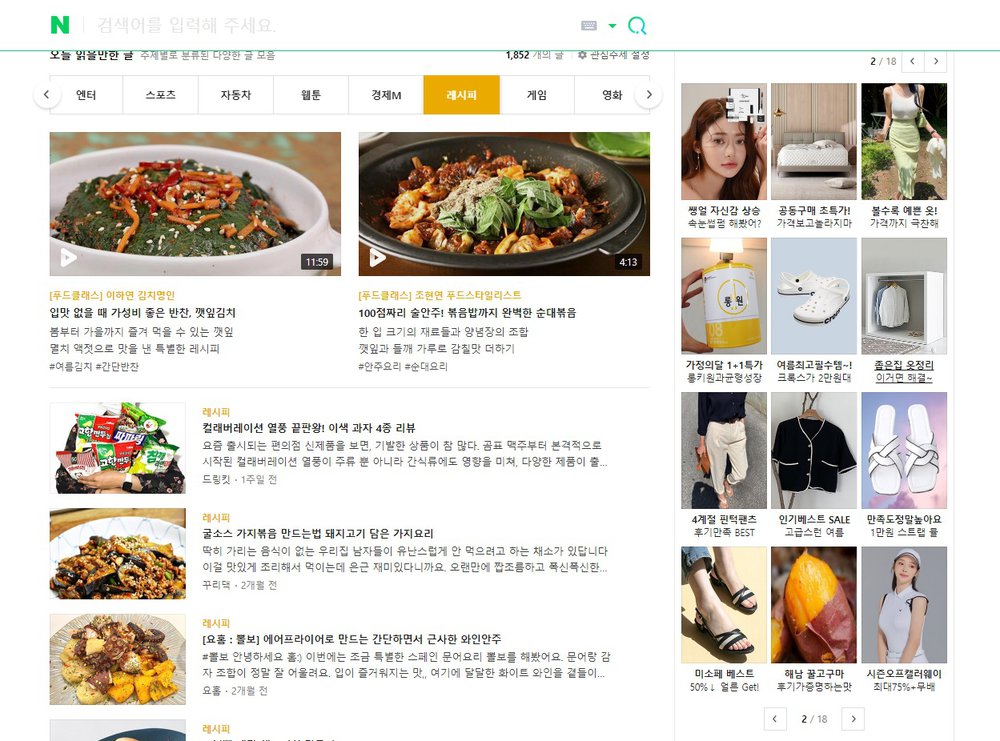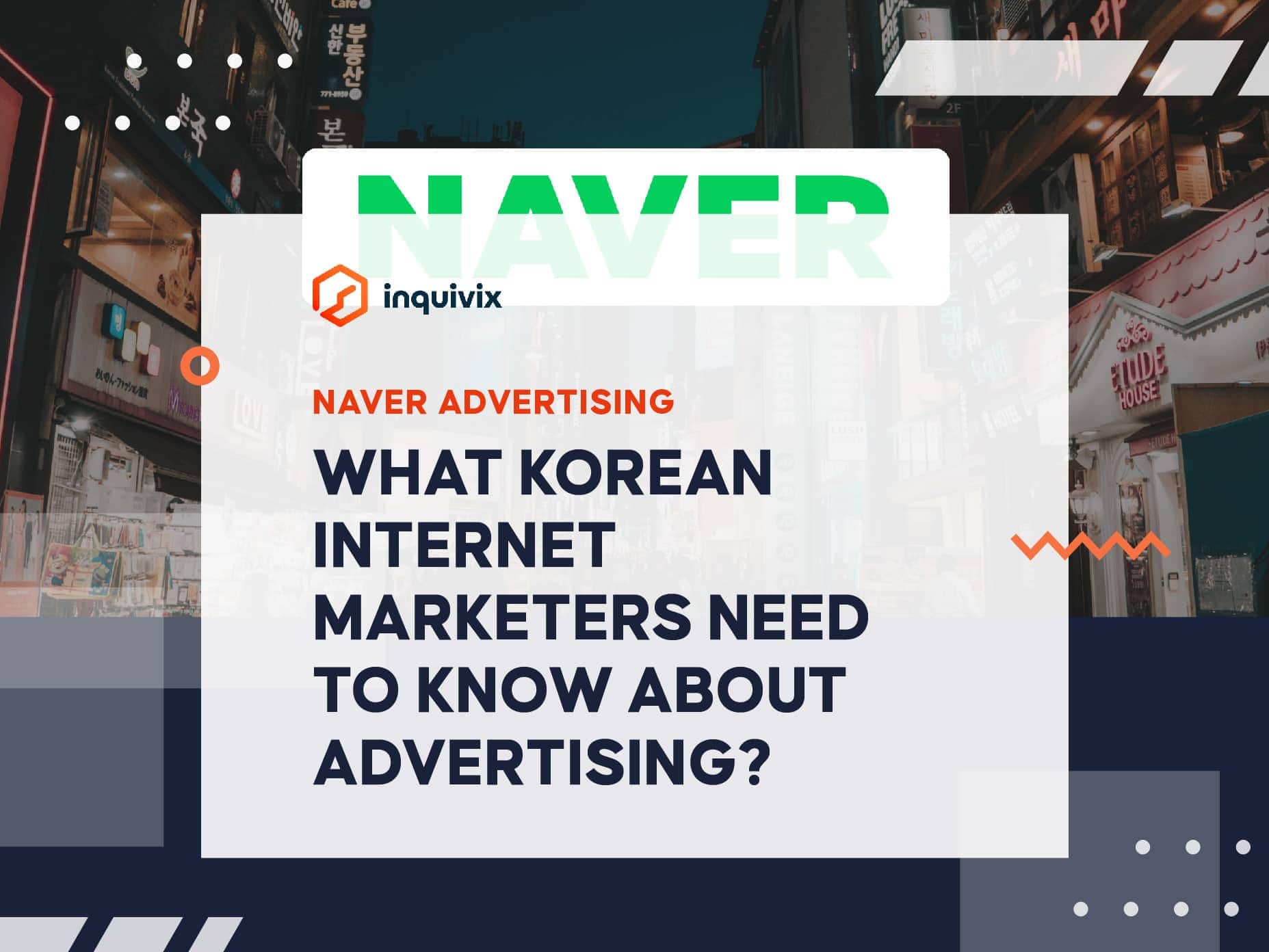Inquivix HQ
1-903, 18 Eonju-ro 146-gil,
Gangnam-gu, Seoul, Korea
06057
Naver PPC – You know what is so amazing about the internet when it comes to business? It’s global. That means that while staying firmly planted in your home office, you have the potential to communicate with every single person on the planet. More importantly, you can drive untold amounts of traffic and business to your website, store, or affiliate deal.
Marketers in foreign countries know this well. You’ll find plenty of savvy entrepreneurs from overseas creating English-language content to try and tap into that huge audience.
Unfortunately, though, in typically arrogant Western fashion, very few native English speakers do the same.
And as such, they miss out on the HUGE potential of overseas markets.
Today, we’re talking about Naver PPC. Naver is the number one search engine in South Korea other than Google. For a long time, it was significantly larger than Google over there, with an 80% share of the market. In fact, that’s a bigger share than Google has in the US today.
However, this has since changed. Naver owns closer to a 60% market share. This is partly owing to the other features and products the portal offers. This is still a very big audience, particularly when you consider that a lot of those users are browsing with the intent to spend money. Those are the kinds of customers that you should be after.
Considering that South Korea has 50 million users, 84.1% of whom are online, this is a gigantic audience to miss.
Excited yet? You should be! Read on, and we’ll go over everything you need to know about marketing and advertising on Naver and Naver PPC.
What You Need to Know About Naver & Naver PPC

So Naver is a search tool that was originally built in 1999 by a team of ex-Samsung employees. In other words, people who knew what they were doing. Today, Naver is owned by Next Human Network (NHN) which is based outside of Seoul.
The name actually comes from the word “navigate”. Which of course refers to the site’s ability to help you navigate the web.
However, Naver actually fills more roles than just search. Many Korean users will also use it as a web portal for viewing news, online shopping, suggested content and more. This makes it something of a hub, and a great starting point for many people starting their day online.
That also makes it a perfect target for marketers and advertisers, but we’ll get to that shortly.
Many people will use Naver or Naver PPC directly to supply services too (or to act as a go-between). Those include travel bookings and shopping.
The Difference Between Google and Naver/Naver PPC
Google and Naver PPC couldn’t look more different at first glance. Whereas Google has gone to great lengths to keep its user interface clean and even barren. While Naver is covered in text and images. It is a lot closer to Yahoo.
But of course, there is one big limitation. The site is only available in Korean (with some exceptions that we will get to later). That’s right! there is no English alternative. It means that a lot of sites that aren’t directly targeting Naver PPC are not going to be picked up by the search engine. It also means that if you can’t read Korean, the entire thing might be a bit confusing for you. As a result, you may end up leaving before you have given it any proper thought or consideration.
There’s another difference between Naver PPC and Google. While Google attempts to remain entirely neutral when organizing the web, Naver has an element of curation. That is to say that Naver to some extent will choose which sites gain exposure and which don’t. On the contrary, Google simply creates an algorithm that then determines the success or failure of other sites. Naver tries to keep everything in their own ecosystem. So if you check the Naver SERP, you will see that external websites and non-Naver CMS sites are low on the SERP or do not show up at all.
Who is Naver Marketing For?

READ MORE:
Naver Blog Marketing: An Introduction
Naver: Digital Marketing In South Korea
Korea’s Top Two Paid Search Giants: Google And Naver
Who is Naver Marketing Useful For?
The answer: anyone that makes money from a business that doesn’t require the audience to be geographically nearby. And of course, any business that exists in South Korea.
If you run an eCommerce store selling products in South Korea, then it is absolutely essential to know how visible that site is going to be on Naver. Otherwise, it’s the equivalent of an American business completely ignoring Google optimization. Except it’s actually worse seeing as there’s a better chance that Google will pick up non-optimized content through longtail keywords and the like.
On the other hand though, if you run an eCommerce store selling physical goods and you aren’t able to deliver as far as South Korea, then the usefulness of this kind of marketing is a little more limited. If you make sales, then you won’t be able to fulfill those orders anyway. You won’t be able to make a profit. So why bother?
This is true to an extent. Though, of course, there are some less-obvious benefits. For example organic link building.
That is to say, that although you might not get a ton of customers from South Korea, you could potentially gain some links on other websites. Let’s say that extra exposure to your blog causes someone multilingual to post a link on a forum: that could result in more traffic and more clout for you (granted that’s a relatively less likely result).
More useful is Naver advertising for all those companies with sites that can serve South Korean customers. For instance, if you sell a digital product, then there is truly nothing to stop you from taking on customers from that part of the world: and they will be every bit as valuable.
The same goes if you are selling online personal training, or perhaps coaching. And it is true if you are a web developer, a programmer or even a translator too.
How to Succeed on Naver

With all that said then, what can you do to promote your website on Naver? How do you gain exposure and notoriety? Is advertising worthwhile? Let’s take a look at some answers.
Naver Advertising (PPC)
With Naver being as much about curation as it is genuine search engine optimization, it is a very good idea to invest in advertising if you are serious about growing your exposure. To that end, there are a few options.
Click Choice Advertisement
Click Choice Advertisement is a form of pay-per-click advertisement. A Pay Per Click ad is of course an advert that charges for clicks. That means that if no one looks at your advert or clicks it, you won’t be required to pay anything.
Pay-Per-Click
Pay-per-click ads will usually appear in the search results. It will take up the first block of content over the “organic” results. These ads must target specific key phrases, and just like any other form of PPC, your likelihood of appearing will be based on how much you bid for the spot.
Key Phrases
What’s important is to carefully consider the key phrase that you want to target. The aim is not simply to get as many eyes on your link as possible, but rather to ensure those are the right eyes to try and get targeted traffic. To this end, you need to consider not only who is looking at the keyword or phrase, but also when they are looking for it and why. This means understanding “intent.” Intent is one of the least understood but most important concepts in PPC and SEO: it means knowing what the person was looking for when they searched for that phrase.
Many of the tips that can help you achieve greater success on other PPC platforms such as Google will also apply to Naver. In fact, you can even use Google’s keyword research tool and in many cases, the results you find will be at least somewhat relevant. However, you also need to consider that there are slightly fewer features available on Naver for controlling and modifying your approach.
Negative Keywords
One thing you can still use is “negative keywords.” These are terms that you want to preclude someone from seeing your result. Again, the key is to understand intent. The best example is the word “free.” If someone is searching for a “free” dating ebook, then chances are that they don’t want to pay for one. That in turn means that you probably don’t want to pay to get those people on your site!
Time Choice Advertisement
This form of the advert will appear in a set position for a precise duration. You agree how much you will pay and that will guarantee you that spot – with no change in ranking – for a set period of time. This is a feature that is not offered by other platforms such as Google.
However, it’s also important to keep in mind that these ads appear below the PPC ads. That means they will be clicked slightly less often.
It also shows the difference between Google and Naver – you have to scroll through all of this before you get to any organic results (though Google is also taking up more and more of its page with ads).
Brand Search Advertisement
This gives a particular brand a kind of “micro-website” built right into the search engine itself. Therefore, you’ll be able to show much more detailed information about what you do – even embedding videos, images, and large headings. These enjoy high CTRs (click-through rates) and are generally important to buy for your own brands at least.
This is another consideration for those considering Naver marketing outside of South Korea: it’s not just about sales but about brand visibility and awareness. If you want to control how your brand is seen overseas, then you need to consider paying for these kinds of features.
As you might suspect, this means you are paying for an advert on the mobile site.
Content Network Advertisement
This places ads on content partners. That means that you’ll see your advertisements appear on other websites and portals just like this one.
Of course, no matter which of these options you choose to get started with, you might struggle to wade your way through the Korean-only instructions and details. This is why many advertisers and marketers will opt to hire a translator to help them with the process.
Note that you also need to arrange for payment with Naver. Prepayment is most common, though you can send a check to the US office for another option
There is now a targeted version of this advertising platform that is aimed specifically at American South Koreans.
Organic SEO: What You Need to Know
With all that in mind, can you actually perform SEO for Naver? Does it do any good? What are the limitations?
Well, when performing SEO on this platform, you need to consider a few factors.
First, Naver is even more secretive about how its SEO works than Google. Second, Naver uses a slightly different algorithm for each different category of content on its platform. That means you’ll need to use a different approach for promoting news versus promoting something more entertainment-based!
Finally, when your results do show up, they will be buried underneath paid search ads (though these are distinguished by a different colored background), and obscured by vertical searches, related terms, and even lists of recently released books on the topics!
This is a clue as to how you get “in.” Many of the vertical searches will show results that are posted on Naver Knowledge iN, Naver Café, Naver Blog, etc. That means that getting your content – or at least your links – into those places can be a good strategy.
To understand these products a little better:
- Naver Encyclopedia is a tool like Wikipedia that provides the platform with useful knowledge. Creating a brand page here is a must for all new SEO’s looking to break this market.
- Knowledge iN works like Quora. This will take information from numerous sources to offer answers.
- A Naver Blog will be created as soon as you sign up for Naver Webmaster Tools. Naver wants to see you post blog content not only on your own blog but also on this blog in order to create synergy.
- Naver Café is a little like Reddit and provides a place for users to share content they’ve found online. Trying to get shares on here is a very good strategy if you want to communicate to Naver that your content is successful and wanted.
C-Rank Algorithm
The one thing we do know about the algorithm is something called the “C-Rank Algorithm.” This stands for Creator Rank, and that basically means that Naver wants to see you establishing authority and popularity through its own channels. As much as this is a pain for creators, it actually results in a fairly good system that weeds out a lot of spam.
P-Rank Algorithm
P-Rank was introduced more recently to help maintain this higher level of quality. It looks for the actual quality of the webpage and specifically focuses on the crawl-ability of the site, how accessible it is for Naver Bot, the use of structured data, and mobile usability.
Likewise, trying to get your site to be recognized as a news source is also a good idea.
Like Google, Naver also shows a preference for brands. Having a recognizable brand and registering your business is known to be one way to get on Naver’s good side. Likewise, Naver likes to show rich results in its SERPs in a bid to keep its users engaged. Therefore, employing rich snippets (HTML markups) is a good strategy that is very much.
To Sum Up
There’s a lot we still don’t know about Naver marketing and SEO, but we know Naver is key to digital marketing in Korea. That said, this post should provide you with some basic tips that can help you at least raise your profile a little for those search engines. And that can be more valuable than you might think!


